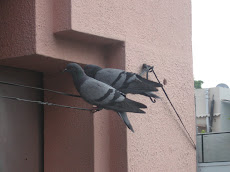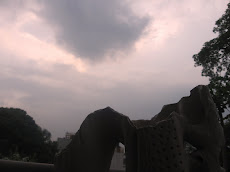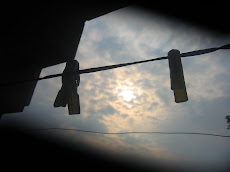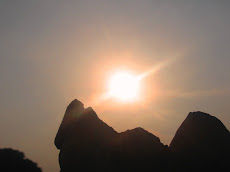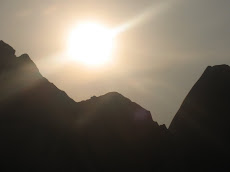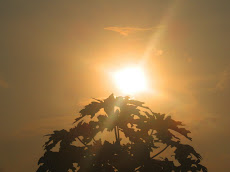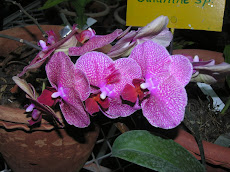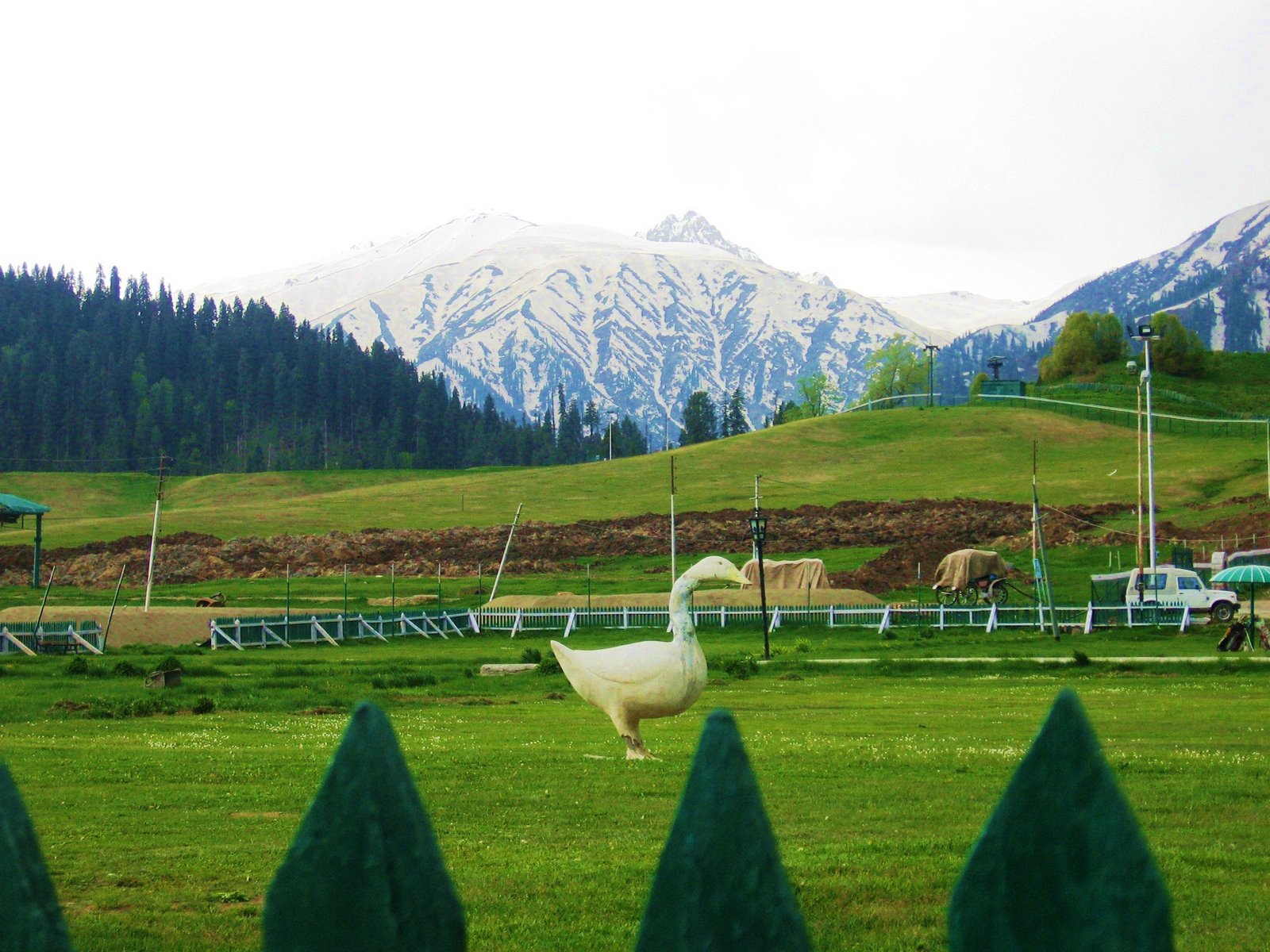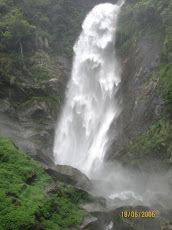Friday, August 8, 2014
Tuesday, August 5, 2014
Saturday, July 26, 2014
Saturday, July 12, 2014
THE RUSSIAN SAGA
To
an Indian, Russia normally attracts, despite its long distance, tough terrain
and hostile climate. Through the annals of history, scores of developments,
having repercussions elsewhere, have taken place in the largest country of the
world, peculiarly falling both in Asia & Europe. Its length and breadth and
vast expanse have given rise to more than one cultural pattern, language and
religion. India and Russia have had close economic, military and cultural ties.
Same has been further cemented by signing of Treaty of Friendship in 1971 and
frequent organization of elaborate festivals in both the countries. These are
apart from intense people to people contact made livelier owing to
unforgettable celluloid ties.
(2)
Till recently Russia was the largest supplier of arms to India. Russian
expertise in handling domestic issues and turmoil outside was not only taken
note of by India but the Border Security Force (BSF), itself was set up on the
lines of Federal Border Guards Service (FBGS) , following our debacle at the
hands of Chinese in 1962. Exchange of delegations between these two apex
organizations has been a matter of regular feature. When, by a way of reciprocal
gesture, an Indian delegation headed by the D.G., BSF was to visit Russia from
20th May to 25th May, 1997 and I was chosen as a Member,
my joy knew no bounds. The Russians depicted in Raj Kapoor’s movies immediately
hit my imagination (Mera Joota Hai
Japani........, Sar Pe Lal Topi Russi, Phir Bhi Dil Hai Hindustani, What a
touching song it was?).
Aeroflot Flight
(3)
There was nothing remarkable about the Aeroflot flight – SU, 536, boarded in
the afternoon of extremely hot 20th May, a Tuesday. The aircraft was old, hardly
having 50% occupancy. In view of the fact that it was a long flight, five
delegates had not only to be familiar with each other but also had to keep everyone
in good humour. Chit–chatting, however, cannot linger on endlessly. As the craft was flying low, one got a good
glimpse of mountains of Pakistan, Afghanistan and many Central Asian countries.
The delayed lunch served by immune type of hostesses, had only one notable
feature – delicious Alphonso Mangoes. Following lunch, the members of crew lost
no time in sleeping on the vacant passenger seats, something that does not
happen elsewhere.
Arrival in Moscow
(4)
Around 13.20 hours (local time), the delegation was warmly received at Moscow
airport by Lt.Gen. A.L. Manilov, Dy. Director, F.B.G.S. Shri A.K. Patnaik, First
Secretary, Consular, Indian Embassy at Moscow was also present. The last named
gentleman who was to co-ordinate our visit, turned out to be the son-in-law of
Shri Man Mohan Singh, the then highly respected Finance Minister. The
delegation had to face a bit of embarrassment in the sense that an Indian ‘
westernized ‘ woman on the pretext of looking after her baby in arms very
smartly had handed over her trolley to one of our colleagues. It took us nearly
ten minutes in locating her in the vast arrival lounge. She had no qualms about
her irresponsible conduct.
(5)
The airport avenue was full of high and colourful hoardings. Even though we
looked tired and sleepy, the changing sight of this famous country kept us
occupied, if not mesmerised. In vacant patches, it was an awesome Alpine
scenario. The landscape looked different from USA, Switzerland, Egypt, or UAE,
the countries one had visited by this time. There was no question of finding
any single unit accommodation for miles in this metropolis of 39.7 kms x 51.8
kms. Russians, whether in period of economic boom or recession, were used to,
if not destined to, live in flats in multi storied edifices in true Communist spirits.
Getting Familiar with Russian Scene
(6)
Following a tiring drive of almost two hours, we arrived at Hotel Soyuz, located
at 12, Universitet Prospect. It was
quite a cold affair, including the official lunch. Only soup appeared somewhat
warm. As one was hungry, there was no time to check whether it was veg. or non-
veg. The fact that we were going to be paid only 25% of our per diem, being
State Guest, dampened our spirits. Nevertheless, a quick nap in the regal
surroundings was not impossibility. Traffic was fast, if not furious.
(7)
Between 4 to 6 p.m, a visit to the Central Museum of the Great Patriotic War at
Poklonnaya Gora was very refreshing even though we had to face very cold winds,
each time, we came out in open. We could also manage to see the magnificent
railway station, a few monuments, statues and historical places mostly from
outside. Though we passed by the famous Kremlin, Lenin’s Mausoleum and Moskva
River, we did not stop by, as these were to be visited as per official
itinerary, some other day. The Liaison Officer, who sported a BSF tie and the
Lady Protocol Officer, both were courteous, helpful and friendly.
Sunny at ‘Night’
(8)
When watch showed 9.00 p.m, it was time to attend a working dinner at the flat
of the First Secretary. It was still sunny but interesting interactions with
Shri P.S. Haer, Deputy Chief of Indian Mission and Shri Khatua, his colleague
kept us engrossed. The conditions appeared amazing as compared to ones, back
home. We were informed that Sun set normally takes place around 10.30 p.m. in
Moscow at this time of the year. Subsequent to having a mix of sumptuous continental
and Indian food, we prayed to God – “ Bless us with some sound sleep in this challenging
time zone.”
Official Confabulations
(9)
21st and 22nd May were devoted to delegation level talks
and courtesy visits to the Deputy Interior Minister and Director, FBGS.
Impressive interiors of their spacious offices took us back to the old era. The
head of Russian delegation before coming to ‘brass tacks’, mentioned a few
words about his memorable visit to India. The Russians, aided by interpreters, touched
upon prevailing situation on the borders with Belarus, Ukraine, Norway,
Finland, Estonia, Lithuania, Georgia, Chechnya, Azerbaijan, Kazakhstan, Tajikistan
and Uzbekistan. A few of the recent border co-operation agreements were also
mentioned. Issues, such as, illegal migration & fishing on coastal borders
and smuggling of narcotic drugs, arms & psychotropic substances through the
borders were also flagged. Obliquely USA and China too figured off and on.
(10)
When our turn came, an idea about Indo-Pak, Indo-Bangladesh, Indo-Nepal,
Indo-China and Indo-Myanmar border challenges was given. A point was also made
about the incessant attempts of Pak ISI to infiltrate terrorist elements and
smuggle drugs, arms & explosives into India. It was impressed upon that
against heavy odds, fencing and flood-lighting of the tough borders with
Pakistan and Bangladesh was being undertaken and that India looked forward to
learn from the rich Russian experience of border management. It was indicated
that their modern border surveillance equipments were to be seen at their
North-Western borders prior to the process of short listing for testing in the
diverse Indian conditions.
Sidelights
(11)
Russians, unlike the Americans, the British or the French did not appear to be
a tough nut to crack, though they looked serious to begin with. Mini glasses of
Vodka and black Russian ‘Chai’ (they
call it this way) would occasionally break the monotony. General Federov, the
Deputy Interior Minister was no different from his Indian counterparts when it
came to mincing words but General A.I. Nikolayev, Director FBGS, a tall
handsome officer, duly aided by his charming young women assistants appeared
more forthcoming, candid and amiable. During official dinner at his lovely
office at 1, Lubyanka he insisted on
gulping a sparkling green soft drink especially by those who were yet to be
acquainted with the ‘kicks’ of Vodka.
(12)
The Joint signed record of the meetings noted that further professional
interaction between the BSF and FBGS would facilitate implementation of the
Border Co-operation Agreement inked in April, 1995. The two sides expressed
further a desire to exchange information and experience in the areas of
combating illegal migration, smuggling of weapons, international illegal
economic activities and the contraband. They were, in addition, also to further
explore the areas of co-operation in respect of border control management
systems, surveillance equipments and radio communication devices.
Sightseeing & Shopping Attempts
(13)
Upon getting a temporary well deserved respite from the official business, it
was back to sightseeing spree. One learnt that we had missed a trip to
Ostankino Tower and Tretyakov Art Gallery. These were the privileges offered to
our Head and his pro-active, yet mixing spouse. We tried to make-up the loss by
taking a stroll in the cold conditions along a busy business street, followed
by the visits to the Central Border Guards House and the Museum of FBGS at 13,
Yauzskiy Bulvar. Due to time constraints, I had to be content with only a
hurried purchase of a compact box containing Russian mini plastic toys for late
Ankoor, then a student of Std. III. Later, I also managed to get a set of
crystal mini toast glasses and an attractive jar.
Marvellous Railway Station
(14)
Prior to our departure by the night train for St. Petersburg, we were briefed
about the field visits and exposure trips along the Finland border. After a
rush through packing stint, we arrived at the grand Leningradsky Railway
Station. Its imposing architecture reflecting an element of rationality left a
lasting impression. The usual Indian kind of crowd, noise and bonhomie was not
to be seen. Only six of us were lucky to occupy the spacious sleeper bogie
efficiently supervised by an Old Russian lady Attendant.
Entry Into St. Petersburg
(15)
After having a feel of comfortable and clean train ride, we woke up to witness
partly snowy conditions of the Alpine countryside. Fog and mist would come and
go at frequent intervals. Indulging into photography was, therefore, but
natural. One had seen beautiful images of
this land in illustrated publications and had read vivid descriptions in the
history books but seeing a bit of same by own eyes was a different ball game.
(16)
At Moscovsky Railway Station of St. Petersburg, Col. V.V. Mochalov, accompanied
by cute Sr. Lt. E.A. Savina received us as per schedule at 8.25 hours. The
drive to the hotel in the nerve centre of the typical European style heritage
city was a short affair as compared to Moscow. This place had more of greenery
and a large number of tourists. Following a quick wash and dull break-fast,
Col. Gen. V.I. Vjyunov, Commander of this region interacted with us. It was
followed by visits to world famous Hermitage Museum and a Buddhist temple. When
we met Shri. Bhattacharya, the Consul General of India later in the afternoon,
I got an exhilarating opportunity to speak to my family members. Amma and
Chotki Bhabhi could not believe that I was not very far off from the North
Pole.
Charm of Vyburg & Finland Border
(17)
Left to ourselves, we would have spent the whole evening in St. Petersburg. But
being bound by the official commitments we had to undertake a three hour drive
to FBS post at Vyburg. An invisible sensor device was seen and found to be in
order. No one stopped us when we spent ten to fifteen minutes inside open
Finland border. The very thought of close proximity to North Pole led to
literal shivering on our part.
(18)
By the time we checked into an old villa kind of hotel at Vyburg, day was still
very bright. We experienced immense pleasure in getting photographed next to
two gigantic boats kept on the banks of a river. Dinner in the cosy, well lit
dining room was a soothing affair. The hotel had a disco as well. However, no
activity was seen even upto 11.30 hours. Seeing
sunset between 11.30 and 11.45 p.m. was one the most fabulous experiences of
life. Body clock, on the contrary, was yet to get used to the tough Russian
conditions. Yet again one could manage hardly four to five hours of sleep.
(19)
The visit to Frontier Post no. 5 to have familiarisation with the engineering
equipment system was rather a dull affair. Journey to Torfyanovka to peruse the
efficacy of special frontier control means was, however, memorable. A short
halt at a guest house near a quiet pond took us to a western movie kind of
setting. In the same way, seeing the raising of water level to enable steamers
to get entry into a port was something I would, perhaps, not forget.
Account of Midnight Sun
(20)
The missed evening of the previous day at St. Petersburg was in a way
‘restored’ to us. Having completed almost all official engagements we were on
our own, enjoying the sights of the beautiful city at night. We heard versions
and versions of the spectacle of Midnight Sun. Without seeing it in reality, I
was simply blown away. Today being our penultimate day, some souvenir items
were also to be picked up from the downtown. All this meant that we got delayed
in reporting to the hotel.
The Retreat
 (21)
The next morning was a relaxed affair. I relished a brisk walk in the
enchanting surroundings. Off and on, it would rain, though. 14.00 hours was the
time intimated to bid good bye to Russia from Pulkova Airport. The Luftansa
flight LH-3197 to Frankfurt in Germany was dot on time at 15.05 hours. When
A.K. Patnaik from the Indian Embassy and E.V. Savina from FBGS shook hands with
us, we were rightly reminded of a scene in ‘Mera
Naam Joker’ featuring Raj Kapoor and Kseniya Ryabinkina (Marina).
(21)
The next morning was a relaxed affair. I relished a brisk walk in the
enchanting surroundings. Off and on, it would rain, though. 14.00 hours was the
time intimated to bid good bye to Russia from Pulkova Airport. The Luftansa
flight LH-3197 to Frankfurt in Germany was dot on time at 15.05 hours. When
A.K. Patnaik from the Indian Embassy and E.V. Savina from FBGS shook hands with
us, we were rightly reminded of a scene in ‘Mera
Naam Joker’ featuring Raj Kapoor and Kseniya Ryabinkina (Marina).
‘Long live Indo-Russian friendship’,
we said to ourselves while walking into the packed flight for another country.
Mother India
Yet
again one is on a writing spree that too on my erstwhile make shifts object-Air
Sickness Bag. Flight SG 887 from Bagdogra to Delhi at 8.20 hrs on 17/06/14 propels
or impels me to revert to pen down stray thoughts at an altitude of 36,000
feet. It is a kind of contemplation in
isolation situation.
It
happens to be Jaya’s Birthday today but I am forced to leave her alone in the
wee hours due to an important if not urgent meeting in Delhi. Could not bestow
her with a gift either. She did, however, wear a nice, attractive and green &
yellow silk sari, presented by her affectionate and caring Bhabhi, a month ago.
As she often utters, there has to be interest and inclination to carry forward
the journey of life. Slowly, subsequent to sad demise of her "Mama", her
‘cloth contact’ with the family of orientation is getting eroded and with the
premature and painful departure of our only child three years ago ,the
association with the family of procreation (if one comprehends well), too is
bereft of the usual and expected excitement or charm.
To
quote from a song of "Mother India"-'If
one has arrived in the world, one has to live on and on.' The unforgettable
heroine of the Magnum Opus with her remarkable acting prowess had left an
indelible mark on the audience. She was subjected to struggle even when her
husband was very much alive. She had to linger on when her two sons were
growing. She had to get the wrath of the scrupulous populace of the village
when her younger son would indulge in nuisance as a grown up teenager and what
not she had to bear and tolerate. A day comes when he turns into a dacoit due
to the nature of circumstances and kidnaps his lady love. She was none other
than the pupil of the eye of the most notorious money lender of the village who
systematically exploited and tortured his mother to the hilt. One day he even
dared to outrage her modesty.
Those
of us, who wish to know the dark reality of rural India and sacrifices of
motherhood, should see Mother India. It should be a must for the budding and
trainee Civil Servants, apart from the 'pro-active' NGO types.
From
the pains and perils of motherhood, let us return to the exciting experiences
of sky life. We are half an hour into the pleasant flight and then suddenly are
confronted with the turbulent weather. At least the Captain makes us believe
so. Pretti, the bubbly and slim Air Hostess religiously reminds the passengers
to see "fasten the seat belt "sign and act accordingly.
Soon
one of the most sumptuous and gourmet breakfasts I ever had, follows. Two
Vadas, Upma, somewhat sweet and sour but thick Sambhar, two glasses of water
plus a 'Maha' Coffee are on offer. I am supposed to be the only ‘VIP’ on the
flight, other 5 seats being unoccupied. So I am worthy of all the attention
(?). Credit should go to Dips. Who else?
When
the weather stabilises and the movement of travellers and the crew resumes on
the aisle, I am tempted to look through the tiny windows. It is a pitch white
scenario. No traces of blue or grey or white cloud formations altogether. The
blazing June Sun appears to have been mellowed down, if not, covered
completely. After 10 minutes or so I sneak through the thin clouds. A streak of
Mother Earth is now visible. The recurrent cries of a tiny tot and never ending
pleasant queries of a two year old keep their mothers on their toes.
Then
a five year old boy has an urge to relieve himself. Again the valuable services
of a mother are sought. He does not succeed as easily as there is a queue for
the Rest room. A tall handsome old man and a good looking jeans clad college girl
too are seen queuing up for fulfilling a biological need we often tend to
postpone or suppress. A foreigner together with his companion on a neighbouring
seat is oblivious to these developments. They are simply sleeping to glory.
Another corporate group, close by, is deeply engrossed in comparing styles of
functioning of the present Central Government vis-a-vis the previous one.
Meanwhile,
another Hostess emerges to clear the cups, plates, and the empty coffee
glasses. I do not fail to thank her profusely for the nice eatables coupled
with service with a smile. Incidentally, smile is something which comes
naturally if not instantly to a mother or a would be mother. It may not cost
anything but carries a sizeable meaning and substance. All of us need to
inculcate it in everyday life to win friends and admirers if life, per se,
has to be lived gracefully, with a purpose.
O,
weather becomes turbulent again. One has to face it. In the next ten minutes very
soothing blue and white clouds appear on the horizon. We seem to have covered
more than half of the scheduled journey, by now. Descent will take place after
20 minutes or so. We would, thereby, get entry into the fast and furious world
of the Nation’s capital, enjoying a temporary respite from the scorching and
sweltering heat, less than a week ago.
At
this juncture, two of the would be mothers seem to be relishing their delayed
Break Fast on the corner seats. Two young and would be Fathers enter the scene
to clear the leftovers into the black poly bags. I get some semblance of sleep
in no time. Also prior to close of the journey, flick through the colourful
pages of the Spice Route. Plenty of material to ponder over but limited time to
read.
In
the ultimate analysis, nothing pleases me more than the 20 minutes ahead
arrival of the aircraft. The temperature in Delhi is reported to be tolerable
38 degree Celsius. One can, therefore, perform tasks and take on /face the
assignments without a pinch of salt. The day is wide open for the cognitive interactions
under the apparent, challenging, if not, negative circumstances. One, therefore,
needs to have a positive bent of mind apart from willing to unwind at the right
moment.
Was it an air journey with an extra edge?
Sunday, June 15, 2014
Rainy Sunday (8th June,2014)
Rainy Sunday (8th
June,2014)
After a long lapse of time I am trying to jot down or
scribble something. Hope whatever is written or typed on a new computer, is
saved and one is also in a position to carry out editing.
Beginning
with weather, while it is reported boiling hot in Delhi and several parts of
North, over here in Gangtok it is a cool, quiet and congenial feeling. It has
been raining with some intervals since yesterday evening following a dry spell
of almost three days. Each time it pours heavily, this portion of town looks
amazingly beautiful and aesthetically pleasing to the eye.
The Sunday
that it was, was almost spoilt. Mt. Khangchendzonga, the presiding deity of
Sikkim has not been sighted for almost a fortnight. Normal chirping of
beautiful birds of at least ten to fifteen species was experienced very
briefly. They were nevertheless not in a mood to give up. I too struggled
taking their snaps by running all over the place much against the advice of my Ophthalmologist friend. Whatever was washed, could not be dried. No outing could
be planned and the usual feeling of semblance of relaxation on a holiday could
not be accomplished. Yes, one brilliant thing I re-discovered was attempt to
drive the car.
When she was
in deep slumber in the post-lunch session and drizzle had resumed, I took out
the keys of SX4. Went on a test drive up to Bijli’s devastated hut, a distance of barely
half a km. Whole stretch looked deserted. While reversing the car on a neat and
clean road flanked by lush green grass, I felt sorry for the spirit of this
Chowkidar/Labourer, who had the audacity to get hooked up/married twelve times.
One felt
happy and gradually gathered the requisite confidence while retreating in normal
speed. Reverse drive was also tried especially on the upper segment. After all,
I was trying to drive after good two years on a difficult, yet lovely and
enchanting terrain.
Between 4.30
and 5.40pm, after having failed in locating the elusive Mahesh, two of us went
to Ridge Garden in the same official car and
took a much sought after stroll around the Palace, overlooking the misty
valley behind the Guards Ground. Slow pace of work on the site of the
Secretariat was also seen.For a change, rain had stopped and tourists as usual
were seen indulging in fun and frolic. They were also taking funny and
memorable shots in the fading evening light. The “train formation” by a bunch
of robust youngsters from the North left an impact. We too felt rejuvenated in
half an hour. It was followed by a plate of Veg Momos, Jhal Murhi and a packet
of Pop Corn. While the Momos were delicious, much against our apprehensions, last
two items turned out to be perfectly up to
mark.
Tried to
sneak into the lovely Flower Complex but alas same was getting shut for the
day. While returning, it was once again drizzling with bouts of fog, here and
there. Mahesh was nowhere to be seen in the vicinity of his usual joints or
hang-outs. .We passed by Babita, the bubbly Circuit House waitress but could
not wave at her nor did she notice us in such a hazy weather.
Anil, one of
the Circuit House attendants, was located climbing up the steep road to the
Circuit House. He was sweating and breathing profusely. We lost no time in
offering him a lift as a humanitarian gesture.
Within 5 minutes of our safe landing at now brightly
lit Circuit House, both Donald and Mahesh were located. While former had picked
up the news of our maiden drive from this place from Raven, Mahesh, as usual,
sporting an innocent expression, appeared clueless altogether. For a change, he
was seen sporting fresh cloths after having succeeded in performing yet another
weekly bath inside his ‘Bunker’, surrounded by mesmerizing Pine forest at an
altitude of 6200 feet.
We narrated what we had experienced in a short
spell. Got rapt attention of all the attendants – Quiet Asha, D.K., Gopal,
Vishnu, D.B., Ganga, Sonam and Gyalpo. A bit of smile and laughter followed
while we gulped each, a glass of luke warm water. Subsequently, we saw some
scenes of “Sholay”, the block buster of yesteryears (1975) on TV in the
reception area before it was late tea time. Ahead of returning to our thrust
abode of last three months, I do not miss taking a few memorable shots of the
sparkling green plants.
Sipping the
tasty dip tea prepared by Mahesh, we attempt to recall the rainy Sunday and a
few tasks one had to perform on the coming Monday. While drawing the curtains, one
could see that it had become pitch dark. Usual evening walkers even in this
remote and isolated area of town were conspicuous by their absence. A pair of
cows, supposedly owned by the village Amla whose unauthorized entry into the
lush green lawn had been opposed vehemently by the doggy “Ram Prasad”, were no
longer spotted. They had extended all help in trimming over grown grasses by
their swift grazing operation. Whatever was neglected by the human beings was
completed partially by the animals.
The husband of the loud mouth Allahabad woman (afternoon
arrival) was seen contemplating in isolation in the Hawa Ghar down below.
Wearing a half sweater only over his sky blue coloured Kurta Paijama, he was
seen carrying a thick book even now. His young son and daughter-in-law, bereft
of any Pullover, were taking advantage of a brisk walk further down. Their tiny
tot was presumably in the safe grip of
her Grandmother. This approach of taking advantage of “climate change”
appealed to me as against the usual “rush through” regime adopted without fail
by most of the visitors to a hill-station.
Sunday, February 16, 2014
COMMUNITY MOBILISATION FOR LIVELIHOOD PROMOTION: THE JEEVIKA EXPERIENCE
As poverty has been one of the most crucial threats since Independence (other being ever growing population),a frontal attack on this curse has been attempted coinciding with introduction of Community Development Blocks in the early Fifties. A plethora of schemes saw the light of the day but almost all of them followed an individual focused approach. Millions of Rupees have been doled out to the identified beneficiaries in form of loan or loan with subsidy. Owing to consistent faults in the method of identification, many a time, the beneficiaries of poverty alleviation schemes would land up returning the loan component to the bank sooner than expected while the subsidy would be spent on non-essential expenditures. Even the employment generation schemes aimed at minimum income apart from creation of some durable community assets, would result into dis-satisfaction, if not disaster.
Gradually for almost a decade or so, the focus has got shifted from individual centred to group centred approach. It has led to sanction of schemes to the Self Help Groups (SHG) in the crucial sectors of human development. Apart from having more checks and balances and a certain responsibility on the part of group members, it has led to sharing of experiences and learning from each other, development of habit of saving (thrift) and a certain movement towards empowerment of women who have to take up financial responsibility in the limited income families, in addition to producing children, educating them and finally bringing them up.
In the new scenario, especially under the World Bank financed schemes in ten States, the responsibility does not get over upon giving minimum monetary support. Also, these schemes initiated over a decade ago in Andhra Pradesh, Tamil Nadu and M.P.assume that every person,however, poor he/she may be, has some source of livelihood. The spirit of interventions, therefore, should be on promotion of such livelihood.
How Does SHG approach work?
To begin with, ten to twelve men or women on being convinced by a Community Resource Person (CRP) decide to form a SHG. In their first meeting every member contributes his/her saving of Rs.10/15 each to the group fund. When interest develops subsequently by sharing each other’s experience, the periodicity of such meetings becomes twice a week. Minutes and proceedings are to be kept well together with in-loaning and out-loaning activities out of group fund. Soon, one of the members assumes the role of Secretary of SHG or a Secretary is hired on a paltry sum. She is free to work for other SHG’s also. As a result of discussion with and guidance from CRP’s, the nearest commercial Bank is approached for opening group’s account and providing credit link to the short-listed and viable income generating activities. The grant from the State Livelihood Promotion Society (SLPS) through its District and Block offices, thereafter enters the picture. A group of 15-20 SHG’s form a Village Organisation (VO) soon and over a period of time, 25-30 V.O.’s are encouraged to form the Community Level Clusters (CLC). In the event of further acceleration of economic activities, Producers Organisations (P.O.)are also set up.Apart from giving second or third dose of finance, the SLPS also arranges skill development training and market linkage for the produce of SHG’s and V.O.’s.
Replication of such efforts is a hallmark of the scheme. That is why during a recent interaction in Bihar Secretariat, one was informed that the CRP’s from A.P. came to identified three Districts of Bihar in 2007 and now the trained and experienced CRP’s of Bihar are training determined lots of such a project in Rajasthan and Jharkhand.
The JEEVIKA BLPS Project having objectives, such as, creating self managed community institutions, enhancement of income through sustainable livelihoods and increasing access to social protection, including food security, initially launched pilot projects in 22 villages across 5 Blocks in September, 2006. Subsequently, it was started in 18 Blocks across 6 Districts. On getting encouraging signals, it was further extended to 22 more Blocks.
The project has been reported to be successful in formation of 1,17,000 SHG’s, 6420 Village Organisations and 145 Cluster Level Federations. It has its noticeable presence in 20% of the villages (9,200 out of a total of 44,874) through 20,000 trained Community Resource Persons,102 Public Distribution Centres(PDC’s) ensuring effective food security and 369 Bank Mitras. On the financial front, Rs.62 Crores of saving has been mobilized by the community leading to a credit link of Rs.307 Crores leveraged from the commercial banks. According to the effective CEO of JEEVIKA, all this has resulted into an investment of Rs 425 Crores in the community institutions.
The decision to bring the whole of State under the ambit of project to cater to 1.5 Crore rural households in 38 Districts under the presumed pressure from the Ministry of Rural Development , Govt. of India in the name of NRLM, is too sudden a deviation. It may either boomerang or result into a certain duplication of efforts sincerely made for livelihood enhancement, food security and vulnerability reduction. Also women who were on path of empowerment by getting liberated from the age old and oft repeated shackles of patriarchy, may receive the setbacks,they do not deserve.
Gradually for almost a decade or so, the focus has got shifted from individual centred to group centred approach. It has led to sanction of schemes to the Self Help Groups (SHG) in the crucial sectors of human development. Apart from having more checks and balances and a certain responsibility on the part of group members, it has led to sharing of experiences and learning from each other, development of habit of saving (thrift) and a certain movement towards empowerment of women who have to take up financial responsibility in the limited income families, in addition to producing children, educating them and finally bringing them up.
In the new scenario, especially under the World Bank financed schemes in ten States, the responsibility does not get over upon giving minimum monetary support. Also, these schemes initiated over a decade ago in Andhra Pradesh, Tamil Nadu and M.P.assume that every person,however, poor he/she may be, has some source of livelihood. The spirit of interventions, therefore, should be on promotion of such livelihood.
How Does SHG approach work?
To begin with, ten to twelve men or women on being convinced by a Community Resource Person (CRP) decide to form a SHG. In their first meeting every member contributes his/her saving of Rs.10/15 each to the group fund. When interest develops subsequently by sharing each other’s experience, the periodicity of such meetings becomes twice a week. Minutes and proceedings are to be kept well together with in-loaning and out-loaning activities out of group fund. Soon, one of the members assumes the role of Secretary of SHG or a Secretary is hired on a paltry sum. She is free to work for other SHG’s also. As a result of discussion with and guidance from CRP’s, the nearest commercial Bank is approached for opening group’s account and providing credit link to the short-listed and viable income generating activities. The grant from the State Livelihood Promotion Society (SLPS) through its District and Block offices, thereafter enters the picture. A group of 15-20 SHG’s form a Village Organisation (VO) soon and over a period of time, 25-30 V.O.’s are encouraged to form the Community Level Clusters (CLC). In the event of further acceleration of economic activities, Producers Organisations (P.O.)are also set up.Apart from giving second or third dose of finance, the SLPS also arranges skill development training and market linkage for the produce of SHG’s and V.O.’s.
Replication of such efforts is a hallmark of the scheme. That is why during a recent interaction in Bihar Secretariat, one was informed that the CRP’s from A.P. came to identified three Districts of Bihar in 2007 and now the trained and experienced CRP’s of Bihar are training determined lots of such a project in Rajasthan and Jharkhand.
The JEEVIKA BLPS Project having objectives, such as, creating self managed community institutions, enhancement of income through sustainable livelihoods and increasing access to social protection, including food security, initially launched pilot projects in 22 villages across 5 Blocks in September, 2006. Subsequently, it was started in 18 Blocks across 6 Districts. On getting encouraging signals, it was further extended to 22 more Blocks.
The project has been reported to be successful in formation of 1,17,000 SHG’s, 6420 Village Organisations and 145 Cluster Level Federations. It has its noticeable presence in 20% of the villages (9,200 out of a total of 44,874) through 20,000 trained Community Resource Persons,102 Public Distribution Centres(PDC’s) ensuring effective food security and 369 Bank Mitras. On the financial front, Rs.62 Crores of saving has been mobilized by the community leading to a credit link of Rs.307 Crores leveraged from the commercial banks. According to the effective CEO of JEEVIKA, all this has resulted into an investment of Rs 425 Crores in the community institutions.
The decision to bring the whole of State under the ambit of project to cater to 1.5 Crore rural households in 38 Districts under the presumed pressure from the Ministry of Rural Development , Govt. of India in the name of NRLM, is too sudden a deviation. It may either boomerang or result into a certain duplication of efforts sincerely made for livelihood enhancement, food security and vulnerability reduction. Also women who were on path of empowerment by getting liberated from the age old and oft repeated shackles of patriarchy, may receive the setbacks,they do not deserve.
CASTE CONFLICT & POLITICS IN INDIA
Caste reigns
supreme in the present semi-feudal setting, more so, in a few states of
Northern and Eastern India. This unique system of social stratification based
on notion of purity and pollution, having four Varnas and umpteen’ Jatis’,
determines the patterns of everyday life. Not only people are caste-conscious,
they also become caste-centred, many a
time. One such occasion could be elections.
In a
situation of caste endogamy and clan exogamy, attempts for assertion of basic
rights often lead to social tensions and conflicts. Changes in land ownership
or the Govt. sponsored mobility, such as, reservation also add fat to the fire.
Even the educated, profound and well meaning individuals interested seriously
in bringing about an attitudinal change, get discouraged and disenchanted soon,
given the complex nature of circumstances and obstinate leaders.
Compelling Factors-A time comes when such individuals
are compelled to strike a compromise with the same norms of the system, which
in their opinion, were fit for modification earlier. Thus generations come and
generations go but ills of the system go on perpetuating. No permanent solution
appears in sight. Exploitation and misguidance of the spirited individual,
therefore, goes on unabated in the name of ritual ascribed status.
Three Levels of Conflict-Such a scenario leads to a series of
rivalries and conflicts involving the three major Caste groups. Inter-caste
conflict is mainly observed at the following levels:
(A)Between
the Upper and the Middle Ranging Castes.
(B)The Upper
Castes and the Scheduled Castes or Harijans and
(C)The
Harijans and the Middle Ranging Castes.
Based on
some research it has been noted that till the Sixties of the 20th
Century ,incidents of conflict involved primarily the Upper Castes, such as,
the Bhumihars and the Kayasthas. Gradually the former met with tough resistance
from the Rajputs or the Kshatriyas. Brahmins, however, remained relegated to
the background for a sizeable time as neither they possessed enough land nor
they had muscle power at their beck and call.
From the
Thirties of the 20th Century, the Intermediate Castes, such as, the
Yadavas,Koeries ,Kurmis etc. began organizing and mobilizing themselves in a
bid to compete with, as also ‘tackle’ the might of the Upper Castes. But actual
assertion in this domain began taking shape in the Sixties, when infighting
among the Upper Castes registered a rise. Consequently, the middle castes, now
in the ambit of the Other Backward Classes (OBC) became a force to reckon with
in the arena of politics in U.P,Bihar,M.P,Haryana,Rajasthan etc. Natural
corollary was to further strengthen their hold in the countryside and have a
say in the elections, other than to Parliament and State Assemblies.
Impact of OBC Commission Based
Reservations
In tune with
Article 340 of the Constitution, the appointment of Kaka Kalelkar
Commission(1953)and the Mandal Commission(1978)for the O.B.C.’s at the Union
level and that of several state Committees and Commissions, followed by
far-reaching judicial pronouncements, spoke clearly of growing influence of the
middle ranging castes. Owing to reservation facility later, ranging from 15 to
50% at the State level to 27% at the Union level ,the conflict between the
OBC’s and the Upper Castes began becoming manifest. Swords were drawn at each
other in more candid ways.
Resistance
from the Upper Castes was out of the apprehension that their share of
Government jobs would be taken away by the Middle Castes while the latter
considered it as a step in the right direction, as the numerically weak Upper
Castes had dominated every sphere of society. Whatever may be pro and
anti-reservation arguments, the erstwhile harmony and co-existence ceased to
exist. The conflict grew to alarming proportions between 1977 and 1992. Ripples
were felt later. These are still being felt.
Upper Castes vs.Harijans
The second
level of conflict concerns the upper castes and Harijans. Latter used to
constitute majority of landless labourers in villages and were unfortunately,
the traditional sufferers. Such a conflict has been essentially on account of
usurption of land of Harijans and denial even of minimum wages to them.
Attempts to unite them to secure a reasonable living have generally been
suppressed. But in a few cases, the upper castes, apart from exploiting ,were
also extending patronage in the crisis situations. Vis-a-vis middle castes, it
was found absent.
The third
level of conflict is between the middle ranging castes and the Harijans. The
issues are akin to those involved in the second level. However, studies have
shown that the method of deplorable atrocities by the former on the latter have
been somewhat different in nature. In the post-1977 era, when freedom of
expression got a fillip, Harijans expected improvement in their lot ,if not,
the similar treatment prior to transfer
of land ownership to the middle castes. Contrary to their expectations, they
gradually lost patronage of land owners and were more subjugated in the changed
situation. Police and the Magistracy too appeared non-cooperative and
non-responsive. Several incidents bear testimony to it. But whenever their vote
bank is needed for Government formation or providing stability thereto,
Harijans assume temporary significance.
Implicit Levels of Conflict
Apart from
the three explicit levels, there exists implicit levels of conflict among
certain upper, middle and the Scheduled Castes. A contradiction or a tendency
to look down upon is found between the Rajputs and Bhumihars or between
Bhumihars and Brahmins. In the same way, cleavages have emerged between the
upper and lower middle castes. The former are seen virtually ignoring the
latter ,unless it is election time. Moreover, the feeling of superiority and
inferiority has also contributed to dis-unity among the different Scheduled
castes. The Chamars and Dushads are not found on equal footing ,according to
each other. Some of the Dushads would not accept even water from the hands of a
Chamar. .Differences also are noticed between the Bhogtas, Chamars and Ghasis. Hence,
the element of untouchability even gets percolated within the S.C. category.
Rationality vs. Primordial
Loyalities- One is
constrained to believe that behind most of the happenings drawing the attention
of conscious masses in some of the mentioned states ,there exists caste factor.
It shows its true colour and dimension
,both in towns and villages. Elections held at various levels have been decided
on caste considerations. Those having support of a dominant caste, come out
with flying colours while those seeking secular votes normally get vanquished.
Even in the educational institutions, trade associations and few public bodies,
one would get an impression that rationality is being set aside to make way for
primordial loyalities.
Pertinent question, therefore, is –If the educated individuals act
like this, shall we blame the illiterate and tradition-bound masses ?.Certainly
not.
Situation is
changing in some spheres of society, such as, marriage and festivals but the
process of transformation is slow and not free from any incumbrances. So long
as governing elite encash the caste factor to pursue their vested interest , no
substantive change is foreseen in the social structure.
Concluding Remarks-As a matter of fact, the governing
elite especially the politicians, do not have any caste most of the times. Instesd
they belong to the same ‘Interest Group’. Their interest lies in ruthlessly
practicing and mastering a ‘Divide and Rule’ policy vis-à-vis the deprived
non-elite masses. Thus they possess the dual identity of being and at the same
time, not being the members of a caste. The case for urgent and justifiable
entry of the educated and upright persons into the political cauldron, therefore,
assumes significance
Saturday, January 25, 2014
NINE ELEVEN, A BLACK TUESDAY
It was a Tuesday, a black Tuesday called so rightly by the
Americans. On this very day in September, 2001, they got an unfortunate feel of
the terror of worst kind, a catastrophic one by all standards. It was something
the Indians have been facing, confronting and tolerating for more than two
decades, first in Punjab and currently, to utter grief and discomfort in
Jammu& Kashmir and parts of North East and central India. The saga of
terrorism, judging by its current trends, patterns and mammoth manifestations,
it appears, is going to give sleepless nights for quite some time to come.
2. It may not be out of place to mention that in the recent
past, emergence as also unflinching, consistent and regular support to at least
three monstrous Frankensteins, namely, Sant Jarnail Singh Bhinderanwale,
Pirbhakaran and Osama Bin Laden has played a kind of havoc with the very
existence of humanity. They, alongwith their blind but highly motivated,
vociferous and extra aggressive supporters, followers and brethren, have been,
in a position to sow the seeds of hatred and revenge in several vulnerable
parts of the world. In more than one location, healthy sprouting process has
been ensured due to deep-rooted indoctrination in what is termed, ’pockets of
poverty’. Moves are also afoot to carry out further augmentation, proliferation
and strengthening of a sort of religious war (Jehad). Ever rising number of
senseless suicide bomb squads may not have any parallel nor will it have any
solution in the immediate future.
3. Owing to such anti-humanity developments, the sacrificial
goats have been education, culture, a healthy way of life, objectivity and
rationality, what to talk of severe loss to the feeling and urge for universal
peace, stability and brotherhood. Consequently, what matters is an unsatiable
lust for power and authority with ensured support of narcotic drugs,
psychotropic substances and above all, small but lethal arms. Acute
drug-addiction among the warring factions in Afghanistan is by now, a well
established and known phenomenon.
4. The battle-hardened, ’unemployed’ warriors of Afghanistan
first tried to a considerable success, their hand in ‘fertile’ Jammu &
Kashmir. Due to sudden turn of events, they had, perhaps, no option but to
return to their motherland to defend their Taliban brothers against an
Occidental attack led by an extremely powerful & revengeful USA, a nation,
herself responsible for perpetuating and perpetrating the cult of shameless and
senseless killings in several parts of the world.
5. Their tentacles are growing swiftly and rapidly and
sometimes in a manifold fashion, all over.
In their endeavour to combat, not only UN is lending an
unconditional assistance but India owing to its vast miseries of the recent
past and historical compulsions vis-à-vis Pakistan, has also ensured all
support at this crucial juncture. Commitment to check the menace of terrorism
at last, appears to have gathered momentum. There, is perhaps, nothing to look
back and ponder over.
6. Coming to the live theatre of the ongoing war, the
military objective of capturing Kabul and other cities of Afghanistan seems to
have been side-lined in favour of finding a ‘suitable’ replacement for the
Taliban regime. It is an irony that the populace of the devastated land, instead
of having a say in their domestic affairs have to be dependent once again on
the whims and fancies of the super powers. These very forces were instrumental
in installing the Talibans as also their predecessors responsible for
overthrowing monarchy in once ‘liberal’, yet Islamic country.
7. The history has shown that the Afghans have seldom permitted
the outsiders to have any hegemony over them. It is, therefore, sad that on
account of such an attitude and approach, Afghanistan, instead of catching up
with the fast moving universe, has been relegated to the medieval times. There
is no institution worth its name, nor is there any urge or desire on the part
of the citizens to look forward. All that matters is to target and strike
vehemently in the name of ’Jehad’.
8. It would be significant to note that subsequent to almost
a month of consistent and forceful attack with most sophisticated arms, weapons
and newly developed bomb-lets, the US Defence Secretary is on record to have
said that not enough has been achieved and that the US led forces may not be in
a position to nab Osama-bin-Laden. Equally disturbing are the developments relating to killings,
allegedly by the Talibans of once expected alternate leaders, such as, Ahmed
Shah Masood, Haquani and Abdul Huq. The former king, Zahir Shah may also be out
of reckoning sooner than expected in view of recent diplomatic setbacks.
9. In view of above, it may perhaps be pertinent, prudent and
appropriate to submit that it is an advantage India situation which she must
and has to capitalize at any cost. This is the time when India should
decisively display and share its expertise in intelligence gathering and
counter-terrorism measures followed by steps with cautious optimism in order to
further expose its hostile and unfriendly neighbour. In the ultimate analysis,
she should seek to emerge as a force to reckon with.
10. It may not be forgotten and undermined that America’s
loss or blow of immediate past may be India’s significant gain ever. We, nevertheless,
need to do our home task with a certain degree of caution and care, coupled
with a more polished, shrewd and refined diplomacy, especially , during our
future deliberations with the emissaries of the super powers and the
forthcoming UN General Assembly session, wherein main and dominant theme of
discussions is likely to be global terrorism.
Ice Breaking or Bonding?
To begin
from beginning, the Dictionary states that ice is a brittle transparent
crystalline solid. It is water that has frozen and become solid. By
implication, it is supposed to be harder than snow. The oft repeated phrase “breaking
the ice” should not be taken in the literal sense of the term as it aims at
facilitating communication in a primary or extended group situation, such as, a
Course. One may, nonetheless, be justified in asking-What kind of ice needs to
be broken, freak or solid?. Whether the setting per se was perceived clogged with ice?
Pre-arrival
Scenario
All said and
done, in the evening of 10th January,2014,attention of Army, Air
Force, Navy and Civilian officers was glued to 6,Tees January Marg. As a matter
of relief, chill wind that blew the previous partially clear evening had come
to a standstill. Reported minimum temperature was 6 degree Celsius and the
morning fog too had turned shallow. While many comprehended the purpose, some
were in a guessing spree. Others supposedly arrived with an open mind. A
handful did report ahead of time. Same could have been due to compulsions of
transport in a vast capital city, a latent desire to impress or also not to
invite the attention of any of the SDC’s in the event of delay. Nevertheless, the
get-together gathered the required momentum in a matter of about twenty
minutes.
Setting That
Facilitated
Later half
of the evening turned out to be not as cold as anticipated. Initial apprehensions
could be genuine in view of semi-open enclosure, otherwise beautifully
decorated. Impressive aesthetics combined well with soothing electrical display
to create the right ambience. The already existing mini waterfall in a prime
location looked like icing on the cake. Gigantic and sparkling heaters ensured
a sort of climate controlled environment. Upon exchange of pleasantries, the
unstructured introductions began slowly. Possibly everything seemed to be
rolling in the right earnest. After all, the active involvement and
contribution of the families was stated to be a hallmark of the course, a fact
to be taken serious note of by the Civil Servants.
Talks: Past
& Present
Dutiful Mess staff in spotlessly clean white
uniforms began service of liquid and carefully cooked starters with a humble
smile. They appeared fully geared up for such occasions. The nostalgia of days
spent together in a particular tough or convenient station was but obvious amidst
the conversations. Side by side, it was enriching to develop familiarity with
new settings. The party kicked off further with zeal and enthusiasm. In
addition to the service matters, the status-quo of growing and settled
off-springs justifiably figured, time and again. The enclosure was soon abuzz
with bonhomie and excitement. Bejeweled women in their light make-up but heavy
woolens & attractive silk saris added to the charm. All this ensured that
there was not a single boring or dull moment.
Attire &
Common Names
Coming to dress, some were consciously suited
and booted while some preferred combinations. All, however, looked relaxed. Two
foreign friends rightly stole the show with their attractive National dresses. Apart
from the easily identifiable headgear of eight to nine Sikh brothers, Nepali
caps became crowning glories for many. While six nos. of Sanjays rubbed
shoulders with four Sandeeps, a couple of Joshis, Anils and Aloks made sure
that they were not ignored. Singhs as a matter of fact, always outnumber others
and this congregation was no exception. Ten, yes ten of them were seen
displaying their vigour and vitality at the drop of hat.
Flow of
Liquid
Drinking hard or soft or hot, drop by drop,
sip by sip with a common goal to refresh and celebrate with a beaming face and
inhalation prior to and subsequent to intake of tasty food was on expected
lines. No GDE (let’s have a guess)
cases whatsoever, were noticed. A few deeply engrossed in sipping Indian Red
Wine, post dinner appeared more than elated and overwhelmed, driven by a desire
that defied measurement.
Culinary
Delights
One may like to be lovingly reminded of
several tongue-twisters served without any time gap. MEETING WITHOUT EATING
DOES NOT MAKE SENSE. Of the ‘eats’, Cigar Spring Rolls, Dahi Kababs, Fried Fish
and Mutton Kababs were prominent. Whereas, the main course later comprised of
Indian and Thai vegetable preparations, Noodles, Fish items, Chicken Curry,
Mutton Rogan-Josh and mouth-watering Dahi-Vadas. These were rightly accompanied
by a variety of salads, breads, Rotis and Naans (last two served straight from
hearth). One couldn’t think of more delicious dessert items than Mini Kesar
Jalebis, Rabri and Carrot Halwa. No one minded, therefore, spending 10-15
minutes in a queue. After all it is said “A
proof of Pudding is in the eating ”. One should thereby have a decency to
appreciate as well as gobble sumptuous food on an occasion expected to let one
unwind and vent your feelings to ultimately qualify to share and care.
Outcome
As a
particular season does not last forever, the apparent ice prevailing between
the selected competent brains too was destined to melt and evaporate. The
smiling and receptive faces in the dying moments bore testimony to it. It
looked or transpired that the desired objective was accomplished to a large
extent. Resultantly, one may hope for more of opening up and frankness as the
days progress. All good things come to
an end. This superbly organized event was
no exception. Be it Raksha Bhavan or Shanker Vihar or the Central Govt. Pool
Quarters, majority felt prior to hitting the pillow that stage was now set for
a level playing field. Efforts made were expected to bring accelerated warmth
in the inter-personal relationships. Merely five days had elapsed, many many
months and weeks of togetherness were in store.
Tailpiece
To sum up, a few suggestions may be worth
considering, such as, having light music to fire one’s imagination and arranging
chairs around a bon-fire in the interest of individuals having Orthopedic or
Spinal complications. Bon-fire at this time of the year could be also a
precursor to the festivals of Lohri, Makar Sankranti, Pongal and Bihu. All of
them symbolize weakening of the Winter chill on the one hand and the onset of
new harvest season on the other.
Subscribe to:
Posts (Atom)






































































































































































































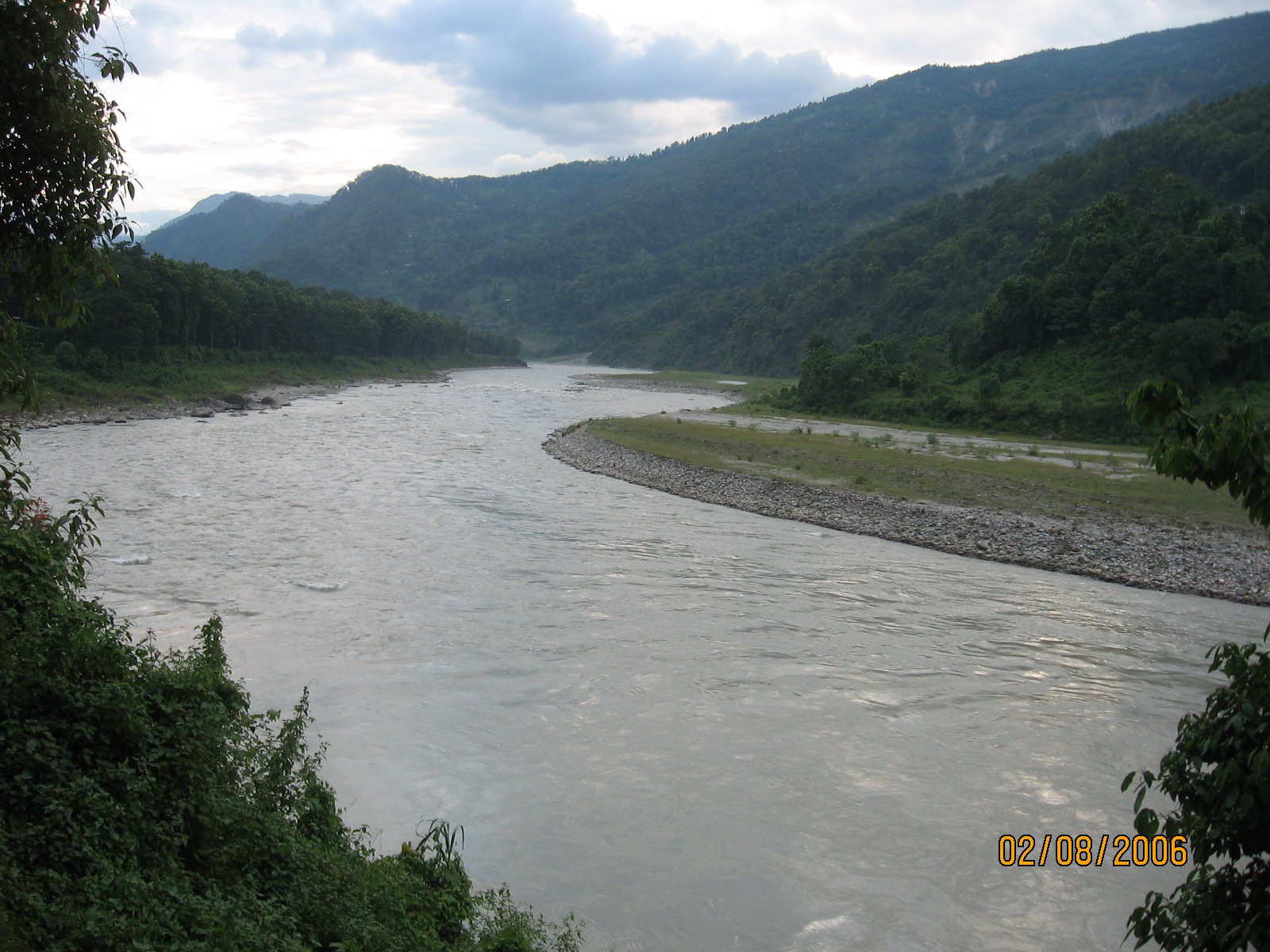





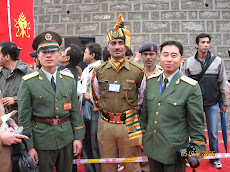
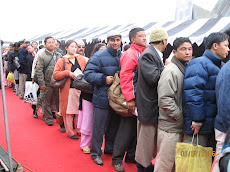




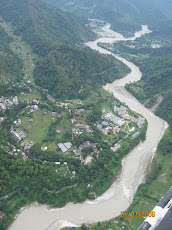




















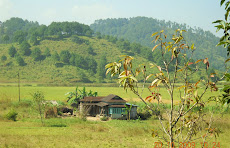









.jpg)


















